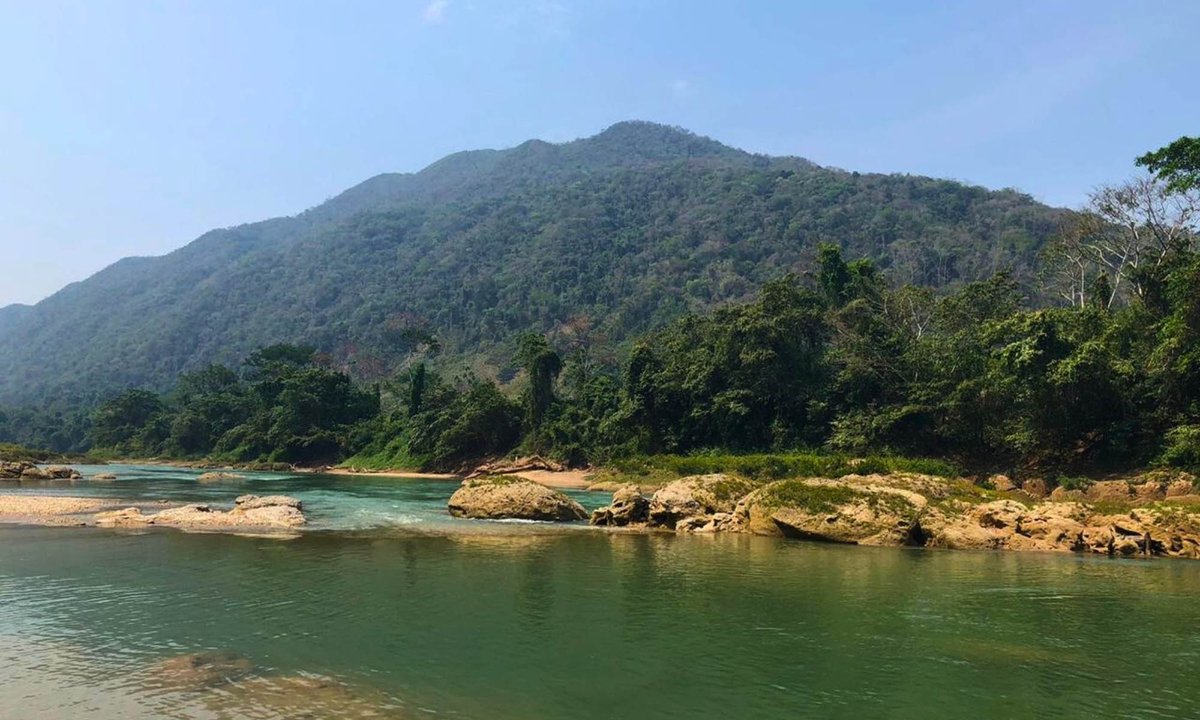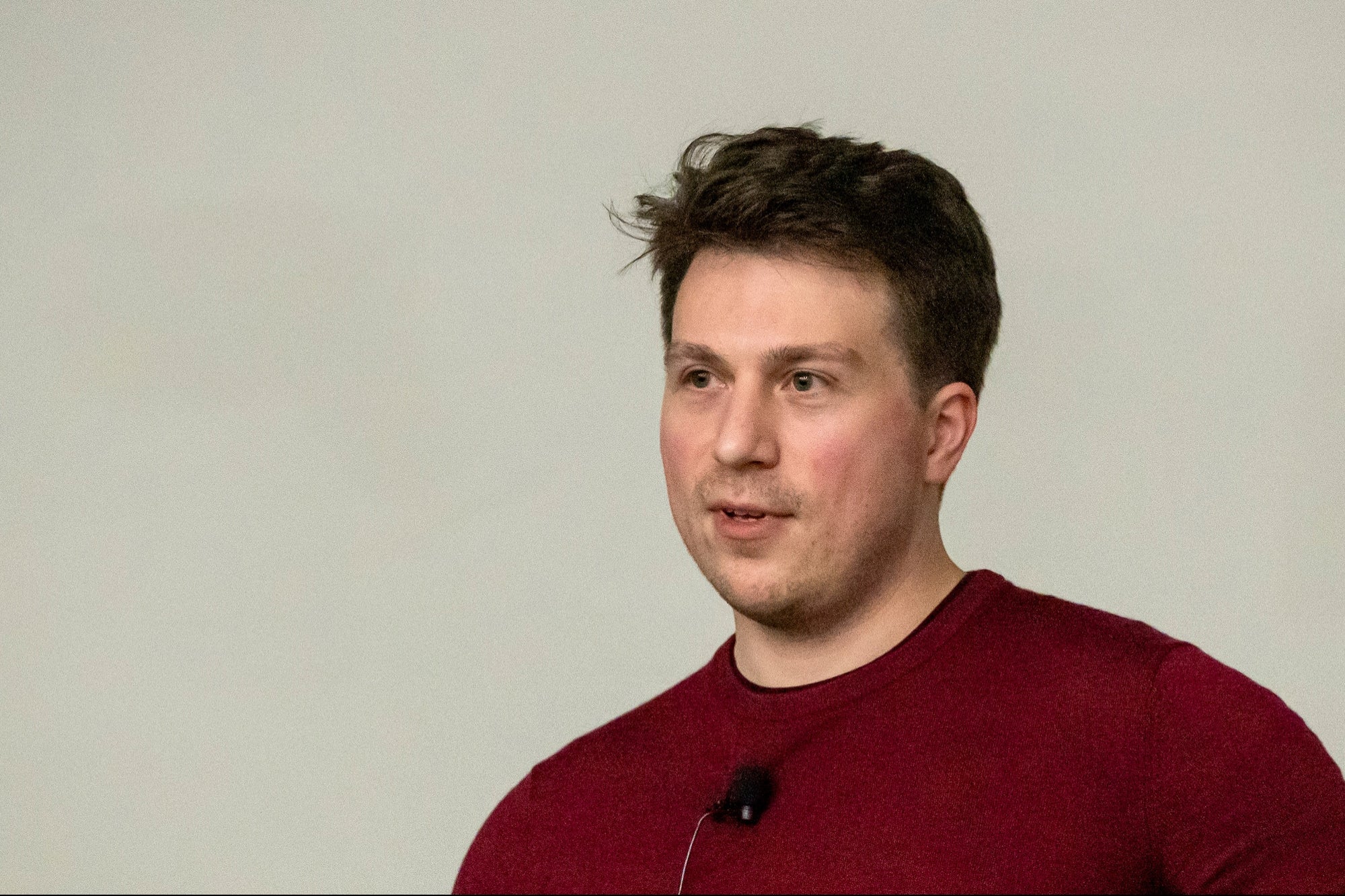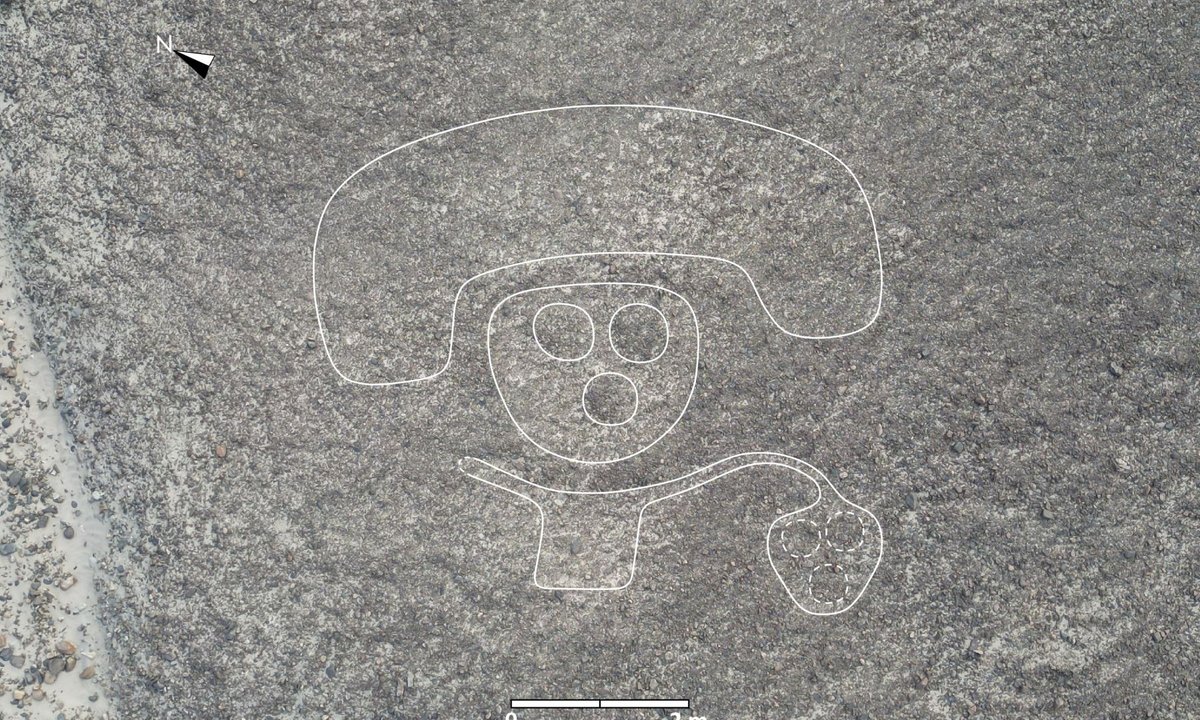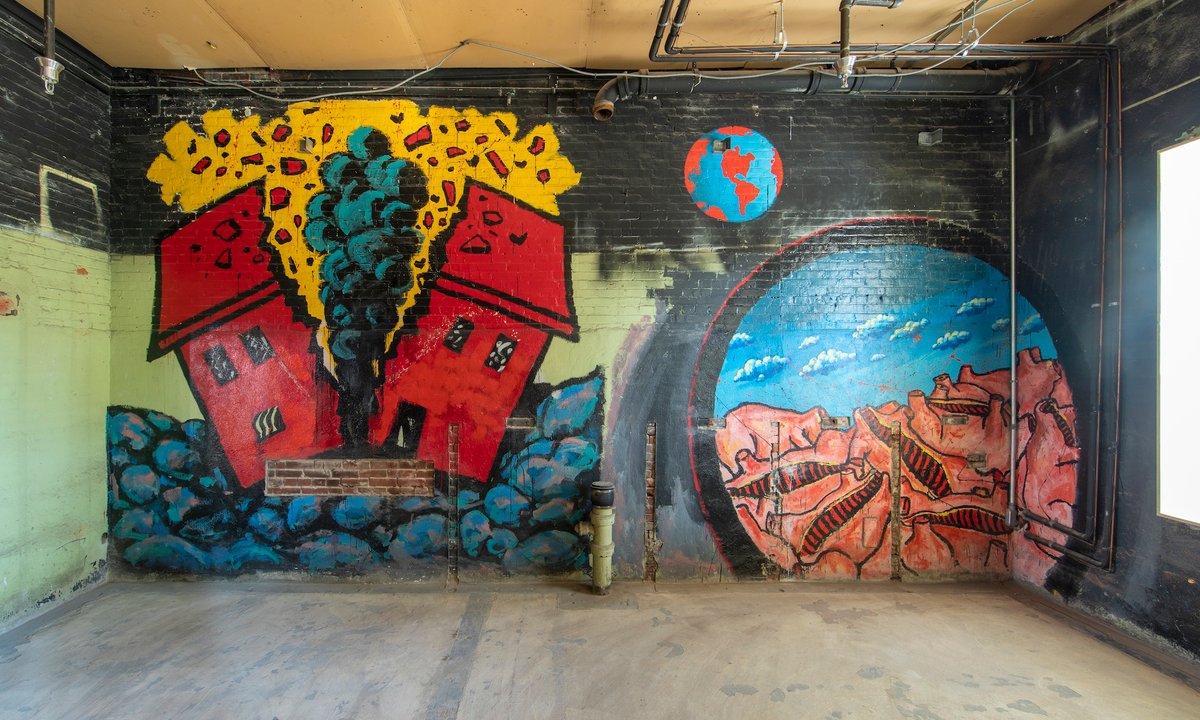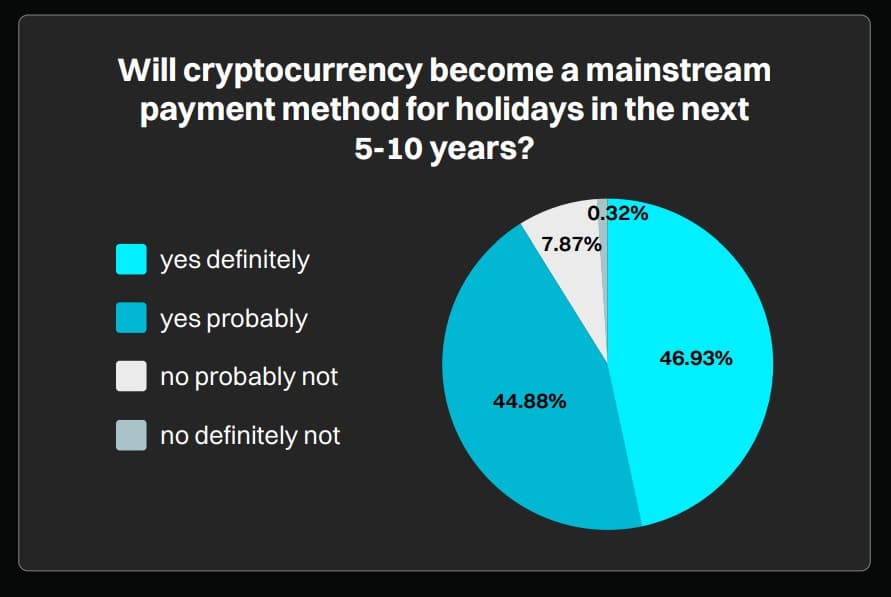David Chichkan, one of Ukraine’s most prominent contemporary artists, whose life and work were inseparable from his devotion to the ideals of anarchism, has died while fighting Russian forces, according to Ukraine’s Ministry of Culture and Strategic Communications. The ministry cited a report by his fellow combatants, stating that he was struck “while repelling an assault by Russian infantry” in Ukraine’s Zaporizhzhia region on 8 August, and on “the next day, his heart stopped”.
The artist joins a growing list of Ukrainian cultural workers who have died since the beginning of Russia’s full-scale invasion, including 36-year-old Maryna Hrytsenko, the chief curator of the Galagan Art Museum in Chernihiv, who was killed in a Russian drone strike on 7 August while serving as a medic. PEN Ukraine, a human rights organisation dedicated to protecting freedom of speech and promoting the development of international cultural cooperation, has recorded the deaths of 221 cultural figures since February 2022.
The pain of hope and despair
Chichkan, who was born in Kyiv in 1986, came from a dynasty of Ukrainian artists that spanned Soviet socialist realism and anti-Soviet non-conformist art. His great-grandfather Leonid Chichkan’s works are among those that have been looted by Russia from the Kherson Art Museum under the guise of “preserving cultural property”.
While not formally educated as an artist, David Chichkan became known for his avant-garde and iconographic images. His work was infused with references to Ukraine’s activist and anarchist history, including references to the 19th century feminist writer Lesia Ukrainka, and to Nestor Makhno, an anarchist revolutionary who fought for Ukrainian independence a century ago.
Cultural critic and curator Kostiantyn Doroshenko wrote in 2016, two years after Russia’s initial invasion of Ukraine and the annexation of Crimea, that Chichkan’s works convey “the pain of despair, the pain of hope, the pain of experience and stubbornness, the pain of individual confidence in the possibility of global social change of the world and man despite everyday reality pulsates in his art”.
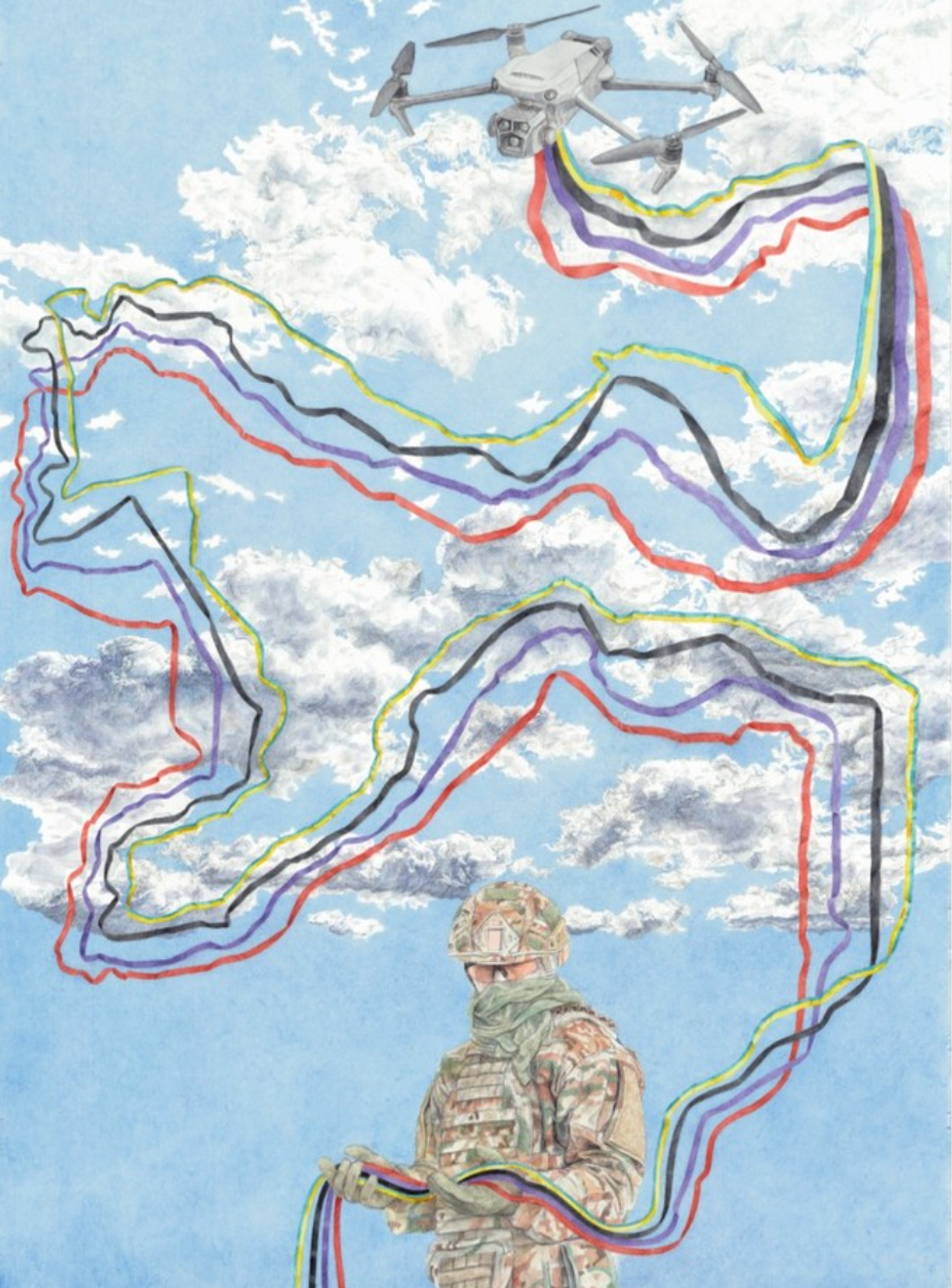
Chichkan shared this work to Instagram in 2024, with the caption “anarchic and anti-authoritarian left drones”
David Chichkan via Instagram
The Art Newspaper contacted Doroshenko via social media, where he described Chichkan as unique among Ukrainian artists for his principled stance. “Among many artists who declared a socially critical, leftist agenda to the extent of its international relevance and grant support, he was the only one who maintained consistency between his statements and actions,” Doroshenko wrote.
“He believed that every person is an artist, and viewed his works as a way of conveying to society the ideas of equality, freedom, responsibility, and the right of everyone to be themselves. He resisted any stigmatization, reacted sharply to discrimination, and saw the causes of these phenomena in patriarchy, capitalism, and power hierarchies.
“As an anarchist, he considered war to be the culmination of anti-human power. But he went to the front because he saw that Russia was destroying all freedom, human dignity, and diversity…Like Nestor Makhno, like the anarchists during the Spanish Civil War, he understood that sometimes one must fight for the future with weapons in hand.”
The hole left behind
In the past Chichkan was repeatedly targeted by right-wing Ukrainian activists for raising questions in his art about the history and contemporary path of Ukrainian society. An exhibition of his works at the Center for Visual Culture in Kyiv was violently raided by masked militants in 2017. In January 2024, an online campaign led to the cancellation of his exhibition at Odesa National Fine Arts Museum.
In a Facebook post on 11 August, Chichkan’s wife Anya addressed those campaigners. “He died in battle on the front lines, spent a year in hell itself, while armchair patriots from the rear criticized him for his leftism,” she wrote. The artist is also survived by his young son.
Lisa Korneichuk is the editor-in-chief of Navigating the War as Artists in Ukraine, a handbook published earlier this year by Ukraine’s Museum of Contemporary Art, a non-government organisation which, in 2022, co-founded the Ukrainian Emergency Art Fund. Korneichuk told The Art Newspaper about the gaping hole left by artists going to war, and how this issue is being addressed.
“In Ukraine, the topic is unavoidable—any man aged 25 to 60 can be drafted—so we felt it was important to address it and include voices of artists who are now serving,” she wrote. “One of the profound losses of war is that it pulls these people out of social and professional life.
“We believe it is crucial to support artists in the military so they can maintain a presence in the professional and public sphere, even if they are absent, unable to travel, or to produce new work. Ensuring their continued participation should be a priority for organisations that support artists in crisis worldwide.”

